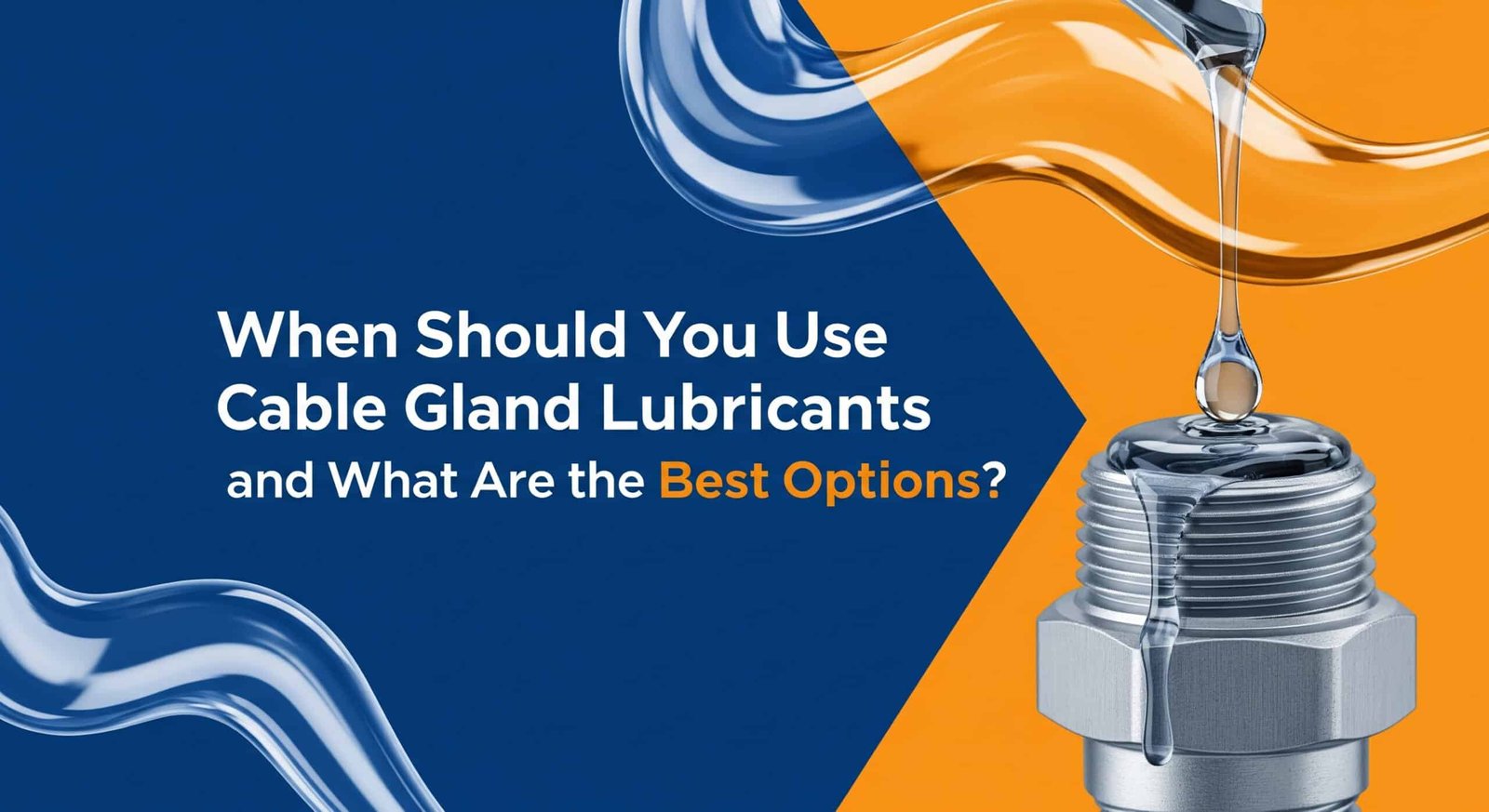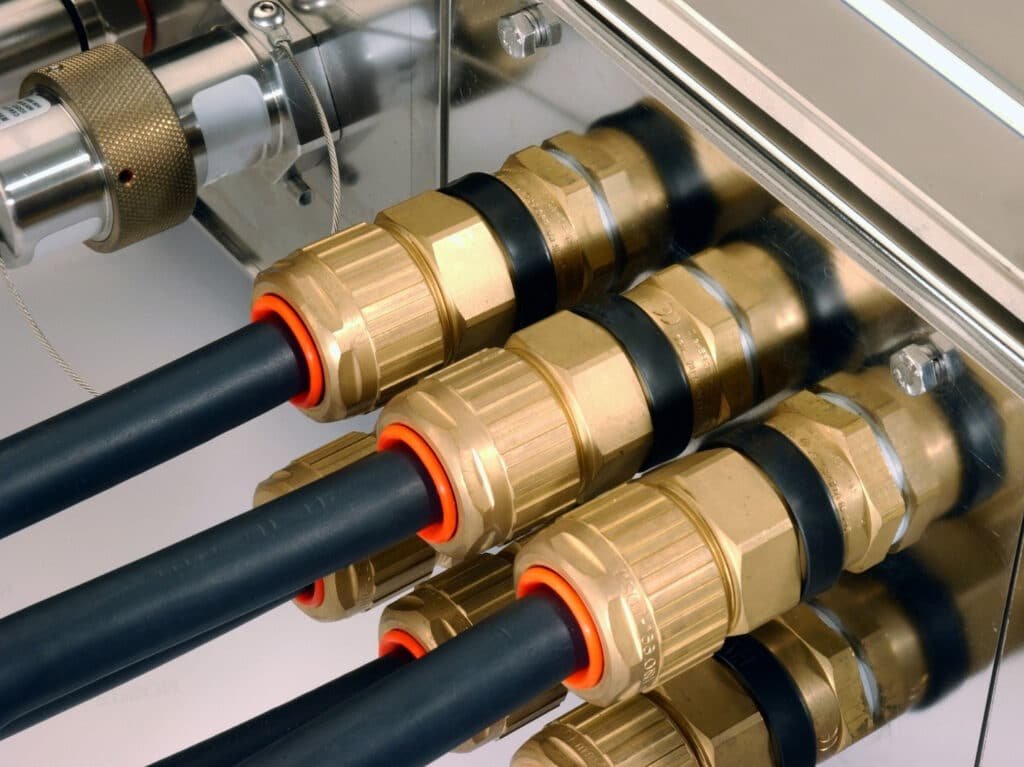
Improper cable gland installation without appropriate lubricants leads to damaged threads, compromised seals, excessive installation torque, premature component failure, and costly system downtime, while incorrect lubricant selection can cause seal degradation, contamination, and safety hazards in critical applications, making proper lubricant knowledge essential for reliable cable gland performance and long-term system integrity.
Cable gland lubricants should be used during installation to reduce friction, protect threads, ensure proper seal compression, and prevent galling1, with silicone-based lubricants recommended for general applications, PTFE lubricants for high-temperature environments, and specialized compounds for chemical resistance, while avoiding petroleum-based products that can degrade elastomer seals and compromise environmental protection.
Having specified lubricants for thousands of cable gland installations across industries from offshore oil platforms to pharmaceutical facilities, I’ve learned that proper lubrication is often the difference between a 20-year service life and premature failure. Let me share the critical knowledge that ensures your cable glands perform optimally from day one.
Table of Contents
- What Are Cable Gland Lubricants and Why Are They Essential?
- Which Types of Lubricants Work Best for Different Applications?
- When Should You Use Lubricants and When Should You Avoid Them?
- How Do You Apply Lubricants Correctly for Optimal Performance?
- What Common Mistakes Should You Avoid When Using Cable Gland Lubricants?
- FAQs About Cable Gland Lubricants
What Are Cable Gland Lubricants and Why Are They Essential?
Cable gland lubricants are specialized compounds designed to reduce friction during installation, protect metal threads from galling and corrosion, ensure proper seal compression without over-torquing, and maintain long-term performance by preventing seizure and facilitating future maintenance, using formulations compatible with elastomer seals and environmental requirements to ensure system integrity and reliability.
Understanding lubricant functions and benefits is crucial for proper cable gland installation and maintenance.
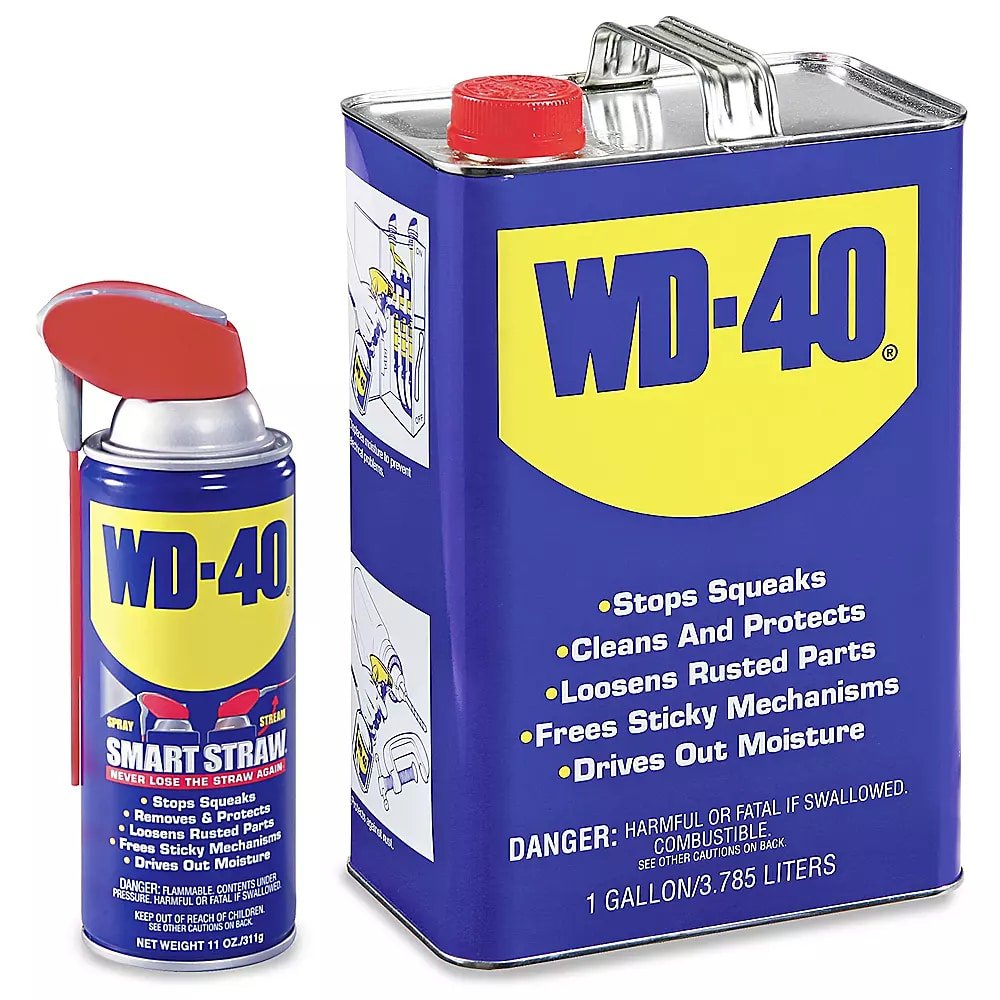
Primary Functions of Cable Gland Lubricants
Friction Reduction: Lubricants significantly reduce friction between threaded components, allowing proper torque application without excessive force.
Thread Protection: Prevention of galling, scoring, and thread damage during installation, especially critical for stainless steel and brass components.
Seal Optimization: Proper lubrication ensures uniform seal compression and prevents seal damage during assembly.
Corrosion Prevention: Protective barrier against moisture and corrosive environments that can cause thread seizure over time.
Benefits of Proper Lubrication
Installation Efficiency: Reduced installation time and effort with smooth, controlled assembly processes.
Torque Accuracy: Consistent torque-to-tension relationships enable accurate installation torque application.
Component Longevity: Protection against wear and corrosion extends component service life significantly.
Maintenance Accessibility: Lubricated components can be disassembled for maintenance without damage or special tools.
Consequences of Improper Lubrication
Thread Damage: Galling and scoring of threads can render components unusable and require costly replacement.
Seal Failure: Damaged seals compromise environmental protection and system reliability.
Over-Torquing: Excessive torque application can crack housings or damage internal components.
Maintenance Difficulties: Seized components may require destructive removal methods, increasing maintenance costs.
Material Compatibility Considerations
Elastomer Compatibility: Lubricants must be compatible with O-rings and seals to prevent swelling, hardening, or degradation.
Metal Compatibility: Different metal combinations require specific lubricant formulations to prevent galvanic corrosion2.
Environmental Compatibility: Lubricants must withstand operating environments without degradation or contamination.
Chemical Resistance: Process chemicals and cleaning agents must not react with or dissolve lubricant films.
Application-Specific Requirements
| Application Type | Primary Concerns | Recommended Features | Avoid |
|---|---|---|---|
| Marine Environments | Salt corrosion, moisture | Corrosion inhibitors, water resistance | Water-soluble compounds |
| High Temperature | Thermal stability | High-temp ratings, low volatility | Petroleum-based products |
| Food Processing | Contamination risk | Food-grade certification | Toxic compounds |
| Chemical Plants | Chemical compatibility | Broad chemical resistance | Reactive formulations |
| Explosion-Proof | Safety requirements | Non-flammable, certified | Volatile compounds |
David, a maintenance supervisor at a wind farm in North Dakota, was experiencing frequent cable gland failures due to thread galling in the harsh prairie environment. The stainless steel glands were seizing during installation, requiring excessive torque that cracked several enclosure housings. We recommended a specialized anti-seize compound with molybdenum disulfide3 that completely eliminated thread galling and reduced installation torque by 40%, saving thousands in replacement costs. 😊
Which Types of Lubricants Work Best for Different Applications?
Different cable gland applications require specific lubricant types: silicone-based lubricants for general-purpose applications with excellent elastomer compatibility, PTFE-based compounds for high-temperature and chemical resistance, molybdenum disulfide anti-seize for stainless steel components, marine-grade lubricants with corrosion inhibitors for offshore applications, and food-grade formulations for pharmaceutical and food processing environments, each optimized for specific performance requirements and environmental conditions.
Selecting the right lubricant type ensures optimal performance and prevents compatibility issues.
Silicone-Based Lubricants
General Applications: Ideal for most cable gland installations with rubber and elastomer seals.
Temperature Range: Typically -40°C to +200°C, suitable for most industrial applications.
Compatibility: Excellent compatibility with EPDM, nitrile, and silicone seals without causing swelling or degradation.
Benefits: Water-resistant, chemically inert, and long-lasting protection with minimal migration.
Limitations: Not suitable for applications involving silicone-sensitive processes or certain chemical exposures.
PTFE-Based Compounds
High-Temperature Applications: Designed for extreme temperature environments up to +260°C.
Chemical Resistance: Superior resistance to acids, bases, solvents, and aggressive chemicals.
Non-Stick Properties: Excellent release characteristics for easy disassembly during maintenance.
Electrical Insulation: Non-conductive properties suitable for electrical applications.
Applications: Chemical processing, high-temperature industrial processes, and specialized environments.
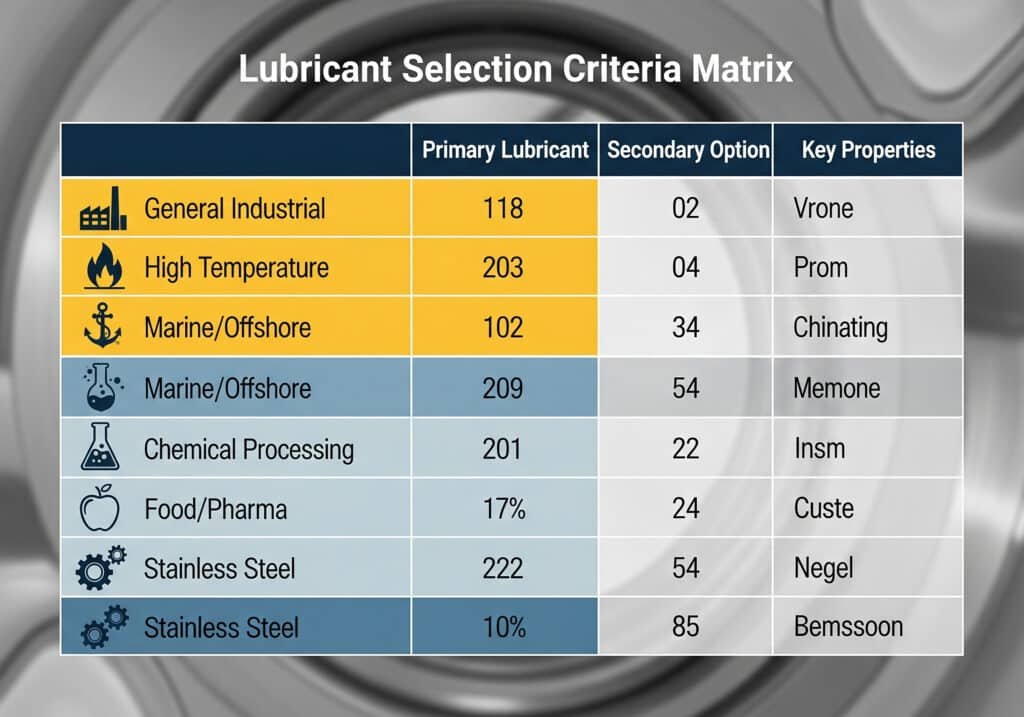
Anti-Seize Compounds
Molybdenum Disulfide (MoS2): Excellent for stainless steel and dissimilar metal combinations.
Copper-Based: Traditional anti-seize for general metal protection, not suitable for stainless steel.
Nickel-Based: High-temperature applications with excellent corrosion resistance.
Graphite-Based: Electrically conductive applications requiring anti-seize properties.
Marine-Grade Lubricants
Corrosion Inhibitors: Specialized additives prevent galvanic corrosion in salt water environments.
Water Displacement: Formulations that displace moisture and provide long-term protection.
Zinc-Rich Formulas: Sacrificial protection for steel components in marine applications.
Biodegradable Options: Environmentally friendly formulations for sensitive marine environments.
Food-Grade and Pharmaceutical Lubricants
FDA Compliance: Formulations approved for incidental food contact applications.
NSF Certification4: National Sanitation Foundation approval for food processing equipment.
USP Class VI: United States Pharmacopeia standards for pharmaceutical applications.
Clean Room Compatible: Low outgassing formulations suitable for controlled environments.
Specialty Formulations
Vacuum-Compatible: Low outgassing lubricants for vacuum applications and clean rooms.
Radiation-Resistant: Formulations that maintain properties under radiation exposure.
Cryogenic Lubricants: Specialized compounds for extremely low temperature applications.
Conductive Lubricants: Electrically conductive formulations for grounding applications.
Selection Criteria Matrix
| Environment | Primary Lubricant | Secondary Option | Key Properties |
|---|---|---|---|
| General Industrial | Silicone-based | PTFE-based | Seal compatibility, temperature range |
| High Temperature | PTFE-based | Ceramic-filled | Thermal stability, oxidation resistance |
| Marine/Offshore | Marine-grade anti-seize | Zinc-rich compound | Corrosion protection, water resistance |
| Chemical Processing | PTFE-based | Perfluorinated | Chemical inertness, broad compatibility |
| Food/Pharma | Food-grade silicone | NSF-certified | Safety approvals, contamination prevention |
| Stainless Steel | MoS2 anti-seize | Nickel-based | Galling prevention, dissimilar metals |
Performance Testing and Validation
Compatibility Testing: Laboratory testing with actual seal materials and environmental conditions.
Torque Testing: Verification of torque-tension relationships with different lubricant formulations.
Environmental Testing: Exposure testing under actual operating conditions and chemical environments.
Long-Term Performance: Accelerated aging tests to verify lubricant stability and performance retention.
When Should You Use Lubricants and When Should You Avoid Them?
Use cable gland lubricants during initial installation of threaded components, maintenance disassembly/reassembly, stainless steel or dissimilar metal combinations, high-torque applications, and harsh environmental conditions, but avoid lubricants in oxygen-rich environments, certain food processing applications requiring dry assembly, explosive atmospheres with flammable lubricants, and applications where lubricant contamination could affect system performance or safety.
Understanding when to use or avoid lubricants prevents safety issues and ensures optimal performance.
Mandatory Lubrication Scenarios
Stainless Steel Components: Always lubricate stainless steel threads to prevent galling and seizure.
Dissimilar Metals: Use appropriate lubricants when different metals are in contact to prevent galvanic corrosion.
High-Torque Applications: Large cable glands requiring significant installation torque benefit from lubrication.
Maintenance Operations: Lubricate components during disassembly to prevent damage and facilitate reassembly.
Harsh Environments: Corrosive, high-temperature, or chemically aggressive environments require protective lubrication.
Recommended Lubrication Applications
Marine Installations: Salt spray and moisture require protective lubrication for long-term reliability.
Industrial Process Equipment: Chemical exposure and temperature cycling benefit from appropriate lubrication.
Outdoor Installations: Weather exposure and temperature variations require protective compounds.
Vibration-Prone Applications: Dynamic loading conditions benefit from anti-fretting compounds.
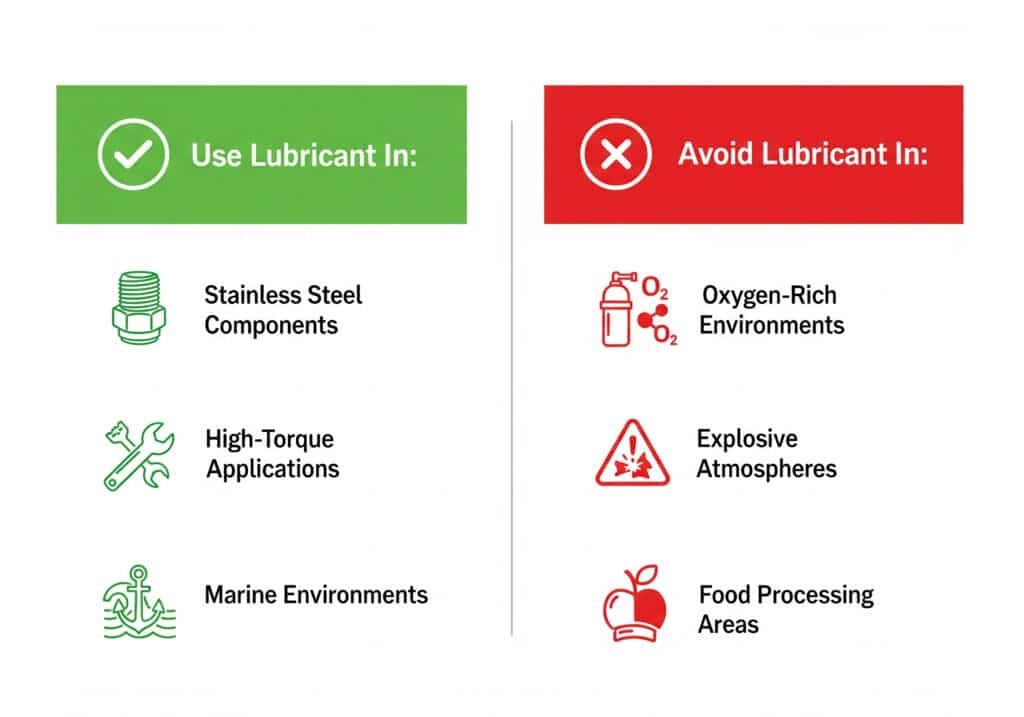
Situations Requiring Caution
Oxygen-Rich Environments: Petroleum-based lubricants can create fire hazards in oxygen-enriched atmospheres.
Clean Room Applications: Some lubricants may outgas and contaminate sensitive processes.
Food Contact Surfaces: Only food-grade lubricants approved for incidental contact should be used.
Electrical Connections: Conductive lubricants may cause short circuits in electrical applications.
Absolute Prohibition Scenarios
Explosive Atmospheres with Ignition Sources: Flammable lubricants must not be used near potential ignition sources.
Pure Oxygen Systems: Most organic lubricants are prohibited in pure oxygen environments.
Semiconductor Manufacturing: Contamination-sensitive processes may prohibit certain lubricant types.
Medical Implant Applications: Biocompatibility requirements may restrict lubricant use.
Alternative Solutions
Dry Film Lubricants: Solid lubricant coatings for applications where wet lubricants are prohibited.
Pre-Lubricated Components: Factory-applied lubricants eliminate field application concerns.
Special Coatings: PTFE or other specialized coatings can provide lubrication without separate compounds.
Design Modifications: Thread design changes or material selection can reduce lubrication requirements.
Environmental and Safety Considerations
VOC Emissions: Volatile organic compounds in lubricants may violate environmental regulations.
Worker Safety: Some lubricants require special handling procedures and personal protective equipment.
Disposal Requirements: Used lubricants may require special disposal procedures and documentation.
Regulatory Compliance: Industry-specific regulations may restrict or mandate certain lubricant types.
Documentation and Traceability
Material Safety Data Sheets: Required documentation for all lubricant products used in installations.
Application Records: Documentation of lubricant types and application procedures for maintenance reference.
Compatibility Verification: Records of compatibility testing and approval for specific applications.
Regulatory Compliance: Documentation supporting compliance with applicable regulations and standards.
Hassan, who manages a petrochemical facility in Rotterdam, Netherlands, needed to specify lubricants for cable gland installations in a new ethylene processing unit. The combination of high temperatures, chemical exposure, and explosion-proof requirements demanded careful lubricant selection. We provided ATEX-certified5 PTFE-based lubricants that met all safety requirements while providing excellent chemical resistance and temperature stability, ensuring safe installation and long-term reliability in this critical application.
How Do You Apply Lubricants Correctly for Optimal Performance?
Correct lubricant application involves thorough component cleaning, applying thin, uniform coats to threads and seal contact surfaces using appropriate tools, avoiding over-application that can attract contaminants or interfere with sealing, following manufacturer torque specifications, and documenting application procedures for quality control, with specific techniques varying by lubricant type and application requirements to ensure optimal performance and prevent installation problems.
Proper application technique is as important as lubricant selection for achieving optimal results.
Pre-Application Preparation
Component Cleaning: Remove all dirt, debris, old lubricant, and corrosion products from threads and sealing surfaces.
Surface Inspection: Examine components for damage, wear, or defects that could affect performance.
Lubricant Selection Verification: Confirm correct lubricant type for the specific application and environmental conditions.
Tool Preparation: Ensure application tools are clean and appropriate for the lubricant type being used.
Application Techniques by Component Type
External Threads: Apply thin, uniform coating to male threads, avoiding the first few threads to prevent contamination.
Internal Threads: Light application to female threads, ensuring even distribution without excess buildup.
Seal Grooves: Minimal application to O-ring grooves, avoiding over-lubrication that can cause seal extrusion.
Bearing Surfaces: Thin coating on compression surfaces to ensure smooth operation and prevent galling.
Application Methods and Tools
Brush Application: Small brushes provide controlled application for precision work and detailed components.
Spray Application: Aerosol lubricants offer quick coverage for large installations and hard-to-reach areas.
Grease Gun Application: High-pressure application for heavy-duty anti-seize compounds and thick lubricants.
Manual Application: Direct application with gloves for small components and precision control.
Quantity Control Guidelines
Thread Lubrication: Thin, visible film covering 75% of thread engagement length.
Seal Lubrication: Light coating that doesn’t pool or create excess buildup in grooves.
Anti-Seize Application: Sufficient coverage to prevent metal-to-metal contact without excess squeeze-out.
General Rule: Less is more – adequate coverage without excess that can attract contaminants.
Quality Control Procedures
Visual Inspection: Verify uniform coverage and absence of contamination or excess lubricant.
Torque Verification: Confirm proper torque values are achieved with lubricated components.
Seal Function Testing: Verify seals operate correctly without binding or extrusion.
Documentation: Record lubricant type, application method, and any deviations from standard procedures.
Environmental Considerations During Application
Temperature Control: Apply lubricants within recommended temperature ranges for optimal performance.
Humidity Control: Prevent moisture contamination during application, especially for moisture-sensitive formulations.
Contamination Prevention: Use clean tools and work areas to prevent dirt and debris incorporation.
Ventilation Requirements: Ensure adequate ventilation for solvent-based lubricants and spray applications.
Post-Application Procedures
Assembly Timing: Complete assembly within recommended time limits to prevent lubricant degradation.
Torque Application: Follow manufacturer specifications, adjusting for lubricant effects on torque-tension relationships.
Final Inspection: Verify proper assembly and absence of lubricant contamination on critical surfaces.
Cleanup: Remove excess lubricant from external surfaces to prevent dirt accumulation.
Common Application Errors
Over-Application: Excessive lubricant can interfere with sealing and attract contaminants.
Contamination: Dirty tools or work surfaces can introduce contaminants that compromise performance.
Wrong Lubricant: Using incorrect lubricant types can cause compatibility issues and component damage.
Incomplete Coverage: Inadequate lubrication can result in galling and installation difficulties.
Storage and Handling Best Practices
Temperature Control: Store lubricants within specified temperature ranges to maintain consistency.
Contamination Prevention: Keep containers sealed and use clean dispensing tools to prevent contamination.
Shelf Life Management: Use oldest stock first and monitor expiration dates for optimal performance.
Safety Procedures: Follow material safety data sheet requirements for handling and personal protection.
What Common Mistakes Should You Avoid When Using Cable Gland Lubricants?
Common cable gland lubricant mistakes include using petroleum-based products with elastomer seals causing swelling and failure, over-application leading to contamination and sealing problems, mixing incompatible lubricant types creating chemical reactions, ignoring temperature limitations resulting in lubricant breakdown, failing to clean old lubricants before reapplication, and using expired products with degraded performance, all of which can cause premature failure, safety hazards, and costly system downtime.
Avoiding these common mistakes ensures reliable performance and prevents costly failures.
Critical Compatibility Mistakes
Petroleum Products with Elastomers: Using petroleum-based lubricants with rubber seals causes swelling, softening, and premature failure.
Silicone Contamination: Silicone lubricants can interfere with adhesives, coatings, and certain manufacturing processes.
Mixed Lubricant Types: Combining different lubricant chemistries can create incompatible reactions and performance degradation.
Wrong Material Combinations: Using copper-based anti-seize on stainless steel can cause galvanic corrosion problems.
Application Quantity Errors
Over-Lubrication: Excessive lubricant attracts dirt, interferes with sealing, and can contaminate electrical connections.
Under-Lubrication: Insufficient lubrication fails to prevent galling and thread damage during installation.
Uneven Application: Non-uniform coverage creates inconsistent torque requirements and potential failure points.
Seal Over-Lubrication: Excess lubricant in seal grooves can cause seal extrusion and environmental protection failure.
Environmental and Storage Mistakes
Temperature Exposure: Storing lubricants outside temperature specifications affects consistency and performance.
Contamination During Storage: Open containers and dirty tools introduce contaminants that compromise lubricant effectiveness.
Expired Product Use: Using lubricants beyond shelf life can result in degraded performance and unexpected failures.
Moisture Contamination: Water contamination in lubricants can cause corrosion and reduced effectiveness.
Installation Process Errors
Inadequate Cleaning: Failing to remove old lubricants and contaminants before reapplication reduces effectiveness.
Wrong Torque Values: Not adjusting torque specifications for lubricated components can cause over-tightening or under-tightening.
Contaminated Tools: Using dirty application tools introduces contaminants that compromise lubricant performance.
Timing Issues: Excessive delays between lubrication and assembly can allow contamination or lubricant degradation.
Safety and Regulatory Oversights
Ignoring Safety Requirements: Using non-approved lubricants in hazardous areas can create safety risks.
Missing Documentation: Failing to document lubricant types and applications complicates maintenance and troubleshooting.
Regulatory Non-Compliance: Using non-compliant lubricants in regulated industries can result in violations and shutdowns.
Worker Exposure: Inadequate personal protective equipment during application can cause health risks.
Prevention Strategies
| Mistake Category | Prevention Method | Verification Process | Documentation Required |
|---|---|---|---|
| Compatibility | Material compatibility matrix | Laboratory testing | Compatibility certificates |
| Application | Standardized procedures | Visual inspection | Application records |
| Storage | Environmental controls | Regular inventory checks | Storage condition logs |
| Safety | Training programs | Safety audits | Training records |
| Regulatory | Compliance procedures | Regular reviews | Approval documentation |
Quality Assurance Measures
Training Programs: Comprehensive training on proper lubricant selection, application, and safety procedures.
Standardized Procedures: Written procedures for lubricant selection, application, and quality control.
Regular Audits: Periodic audits of lubricant practices and compliance with established procedures.
Supplier Qualification: Verification of lubricant supplier quality systems and product certifications.
Corrective Action Procedures
Failure Investigation: Systematic investigation of lubricant-related failures to identify root causes.
Process Improvement: Continuous improvement of lubricant procedures based on experience and industry best practices.
Supplier Feedback: Communication with lubricant suppliers regarding performance issues and improvement opportunities.
Training Updates: Regular updates to training programs based on lessons learned and new technologies.
Conclusion
Proper cable gland lubrication is essential for reliable installation, optimal performance, and long-term system integrity. Success requires understanding lubricant types, application requirements, and common mistakes to avoid. The right lubricant properly applied can mean the difference between decades of trouble-free service and premature failure.
The key to effective cable gland lubrication lies in matching lubricant properties to application requirements and following proven application procedures. At Bepto, we provide comprehensive technical guidance on lubricant selection and application to help ensure your cable gland installations deliver optimal performance and reliability.
FAQs About Cable Gland Lubricants
Q: Can I use regular grease on cable gland threads?
A: No, regular automotive or machinery grease is not suitable for cable glands. Use only lubricants specifically designed for cable glands that are compatible with elastomer seals and won’t interfere with environmental protection or electrical safety.
Q: How much lubricant should I apply to cable gland threads?
A: Apply a thin, uniform film covering about 75% of the thread engagement length. You should see the lubricant but not have excess that squeezes out during assembly. Over-lubrication can attract contaminants and interfere with proper sealing.
Q: Do I need different lubricants for stainless steel cable glands?
A: Yes, stainless steel cable glands require anti-seize compounds containing molybdenum disulfide or similar additives to prevent galling. Never use copper-based anti-seize on stainless steel as it can cause galvanic corrosion.
Q: Can I mix different types of cable gland lubricants?
A: No, never mix different lubricant types as they may be chemically incompatible and create performance problems. Always clean off old lubricant completely before applying a different type, and use only one lubricant type per installation.
Q: How often should I reapply lubricant to cable glands?
A: Reapply lubricant only during maintenance when glands are disassembled. Properly applied lubricants should last the life of the installation. For outdoor or harsh environments, inspect annually and reapply only if lubricant has degraded or been washed away.
-
Learn about the mechanisms of galling, a form of wear caused by adhesion between sliding surfaces under compressive load. ↩
-
Understand the electrochemical process of galvanic corrosion that occurs when two dissimilar metals are in contact in the presence of an electrolyte. ↩
-
Explore the properties of Molybdenum Disulfide (MoS₂), a solid lubricant known for its low friction and high load-bearing capabilities. ↩
-
Discover what NSF Certification entails for food equipment materials and lubricants, ensuring public health protection. ↩
-
Learn about the ATEX directive, the European Union’s requirements for equipment intended for use in potentially explosive atmospheres. ↩

